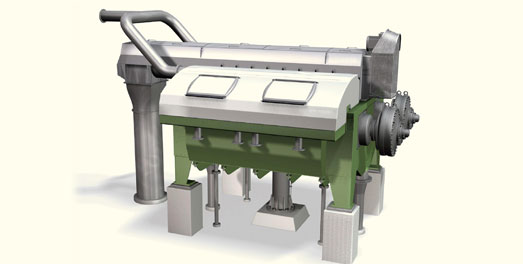Twin Roll Press
Twin roll press applies the displacement press principle to realize continuous dehydrating and washing of pulp. It is an important equipment of black liquor extracting and bleaching with advanced functions and technologies in the world. It fits for chemical pulp, chemical-mechanical pulp and waste paper pulp. Its performances are reliable, and the operation index reaches international advanced level. It can meet the requirements of the project with the annual 1.0-1.5 million tons output.
Twin roll press AGICO manufactured can be operated on a single machine and can be combined with multiple machines for large production scale of paper making mill.
Twin roll press we offer
| Model /Item | Drum length (mm) | Drum Dia. (mm) | Drum Speed (rpm) | Feed Consistency(%) | Discharge Consistency (%) | Production Capacity | ||
|---|---|---|---|---|---|---|---|---|
| Straw / Bagasse pulp | Bamboo pulp | Wood pulp | ||||||
| AMSG712 | 1200 | 700 | 2~20 | 3.5~10 | 20~35 | 30~40 | 60~80 | 80~100 |
| AMSG915 | 1550 | 900 | 2~15 | 3.5~10 | 20~35 | 40~60 | 85~120 | 130~160 |
| AMSG920 | 2000 | 900 | 2~15 | 3.5~10 | 20~35 | 55~85 | 125~160 | 175~210 |
| AMSG928 | 2820 | 900 | 2~15 | 3.5~10 | 20~35 | 80~120 | 165~220 | 250~300 |
| AMSG935 | 3500 | 900 | 2~15 | 3.5~10 | 20~35 | 110~150 | 225~280 | 310~370 |
| AMSG940 | 4000 | 900 | 2~15 | 3.5~10 | 20~35 | 120~170 | 220~310 | 350~400 |
| AMSG945 | 4500 | 900 | 2~15 | 3.5~10 | 20~35 | 160~180 | 285~350 | 400~480 |
| AMSG1532 | 3200 | 1500 | 2~15 | 3.5~10 | 20~35 | 220~350 | 450~600 | 700~800 |
| AMSG1540 | 4000 | 1500 | 2~15 | 3.5~10 | 20~35 | 400~550 | 800~1000 | 1200~1500 |
| AMSG1550 | 5000 | 1500 | 2~15 | 3.5~10 | 20~35 | 500~650 | 1000~1300 | 1700~1800 |
| AMSG1572 | 7200 | 1500 | 2~15 | 3.5~10 | 20~35 | 750~1000 | 1500~1800 | 2500~3000 |


Working Principle
Under some pressure, low concentration pulp is fed into closed pulp groove by screw conveyor. Two pressure rolls are built in the groove, and a series of cracks are arranged on the surface of the rolls, which can go through the axial holes through the rolls and get discharged from the ends of the rolls to prevent the clogging of the groove, a group of thinning blades are inserted into the groove, and the axial hole entered into the water or dilute black liquor under some pressure from the axial hole to clean the groove and drain hole. The pulp is thickened to some high concentration and then stripped into the pulp chest by the scrapers.
Advantages
Twin roll press is set with dehydration, displacement and press parts, so its washing effect is better. It is equipped with advanced hydraulic drive system, bringing us stable and reliable operation. It adopts press principle, has no vacuum requirement and can be installed at different heights, saving the investment of factory building.

